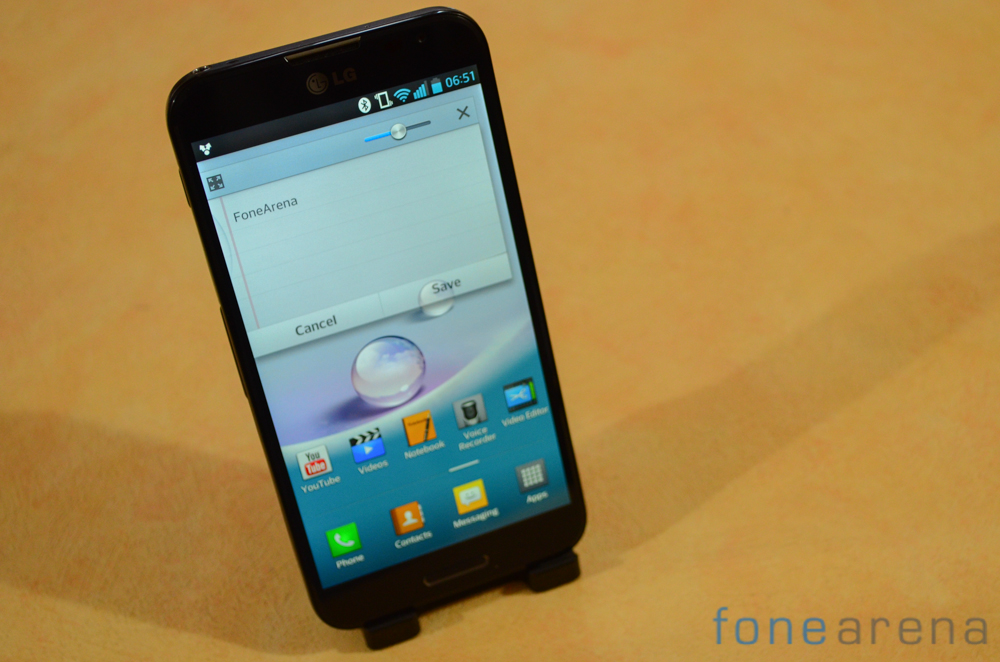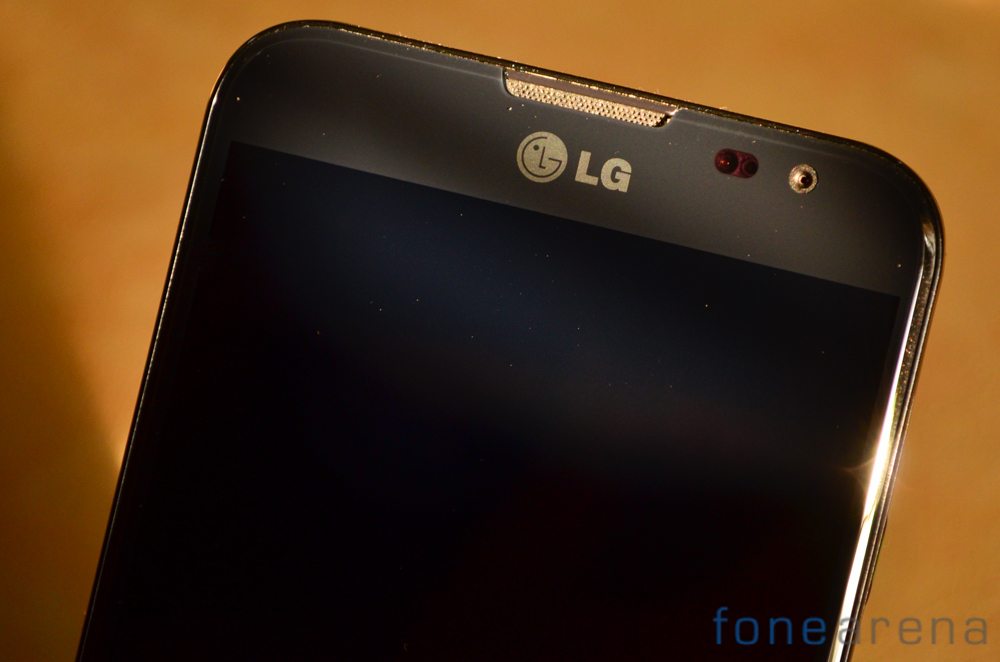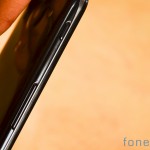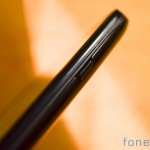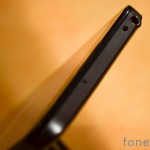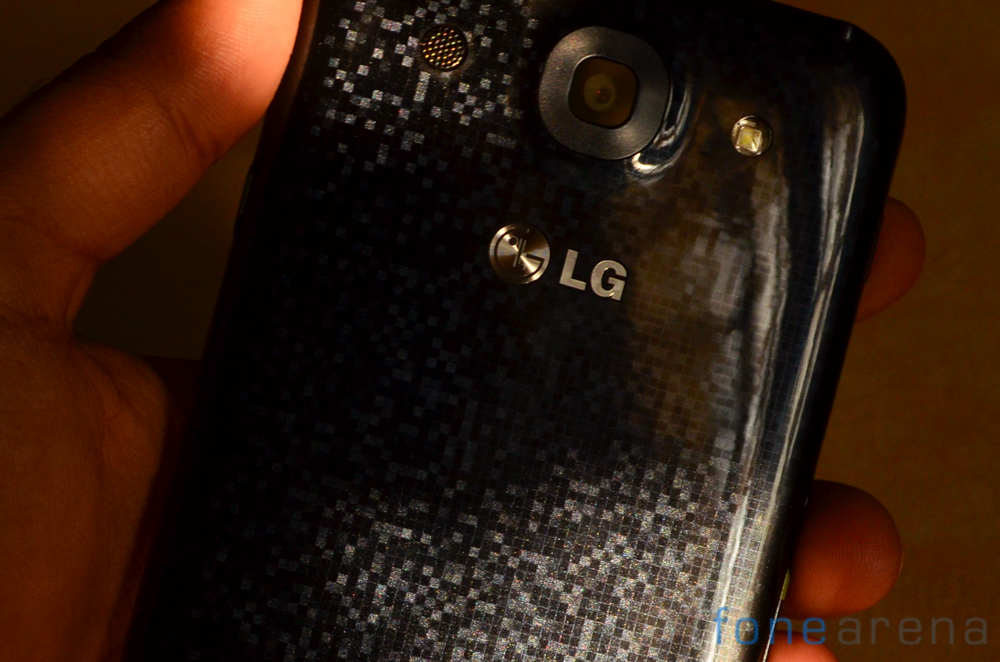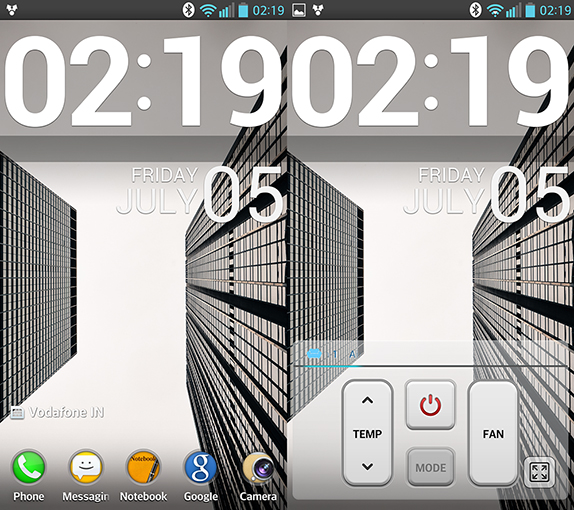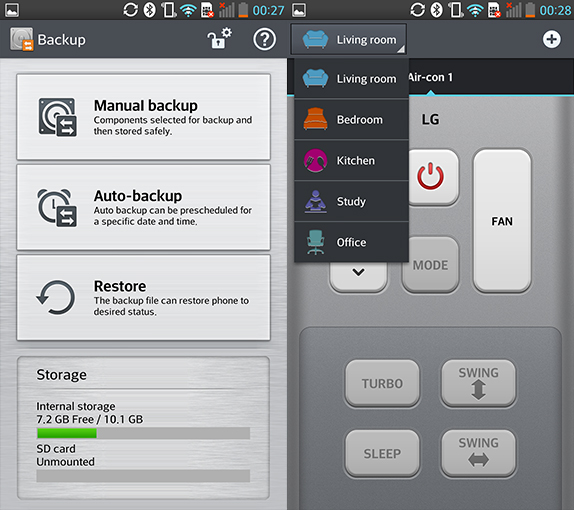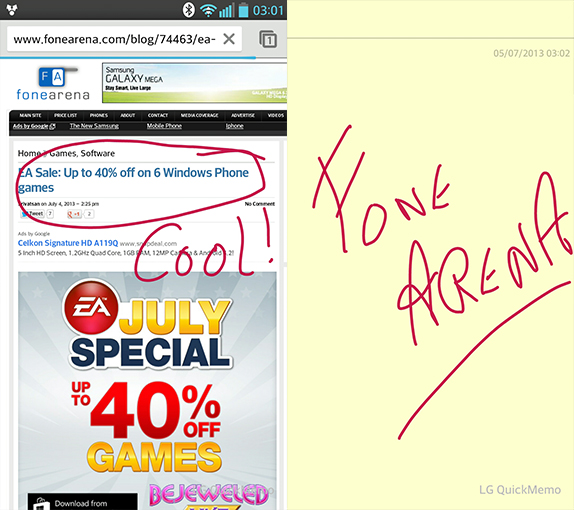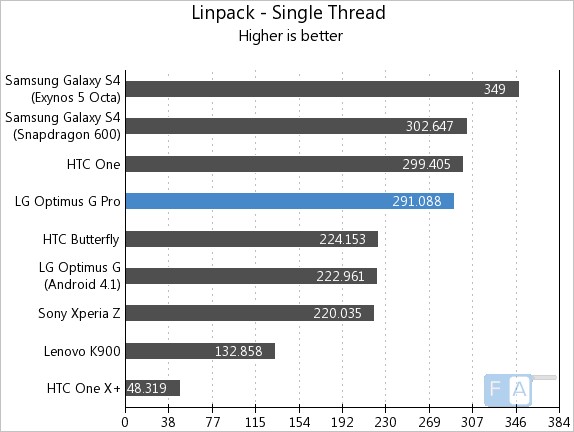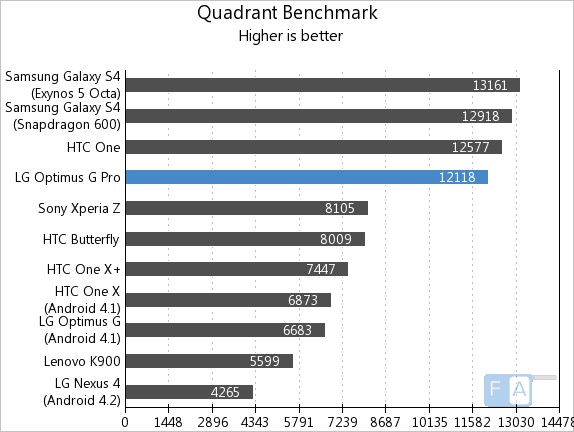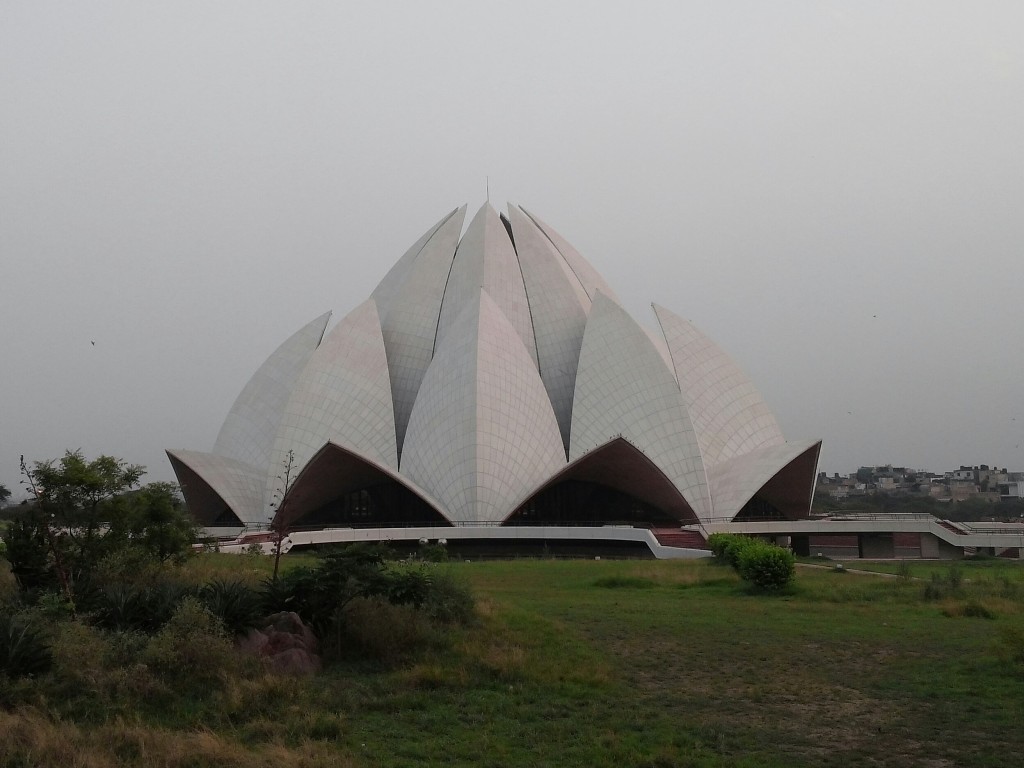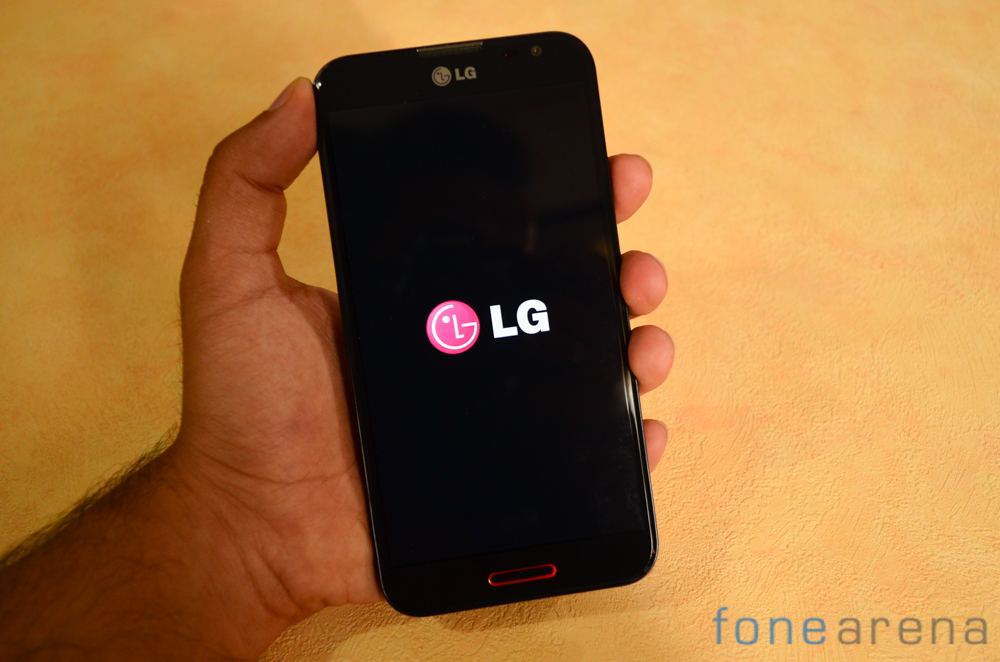LG’s answer for the phablet market and for those craving a massive display is here and on first glance it looks like a winner. Spiritual successor to the Optimus G and more importantly a culmination of design cues taken from it’s siblings and top of the line specs, the Optimus G Pro packs a punch. Does it have what it takes to fend off the strong and more established competition? Read on to find out.
Video Review
httpv://www.youtube.com/watch?v=6DPK25fgdPs
Design
The LG Optimus G Pro doesn’t break any design barriers and for all purposes is a giant slab with a glass touchscreen and a plastic back. That said, it isn’t an eye sore either. The smooth corners, beveled screen and the curvature of the edges of the back panels all help it fit well in the hand. For those who prefer measurements, the LG Optimus G Pro clocks in at 150.2 x 76.1 x 9.4mm.
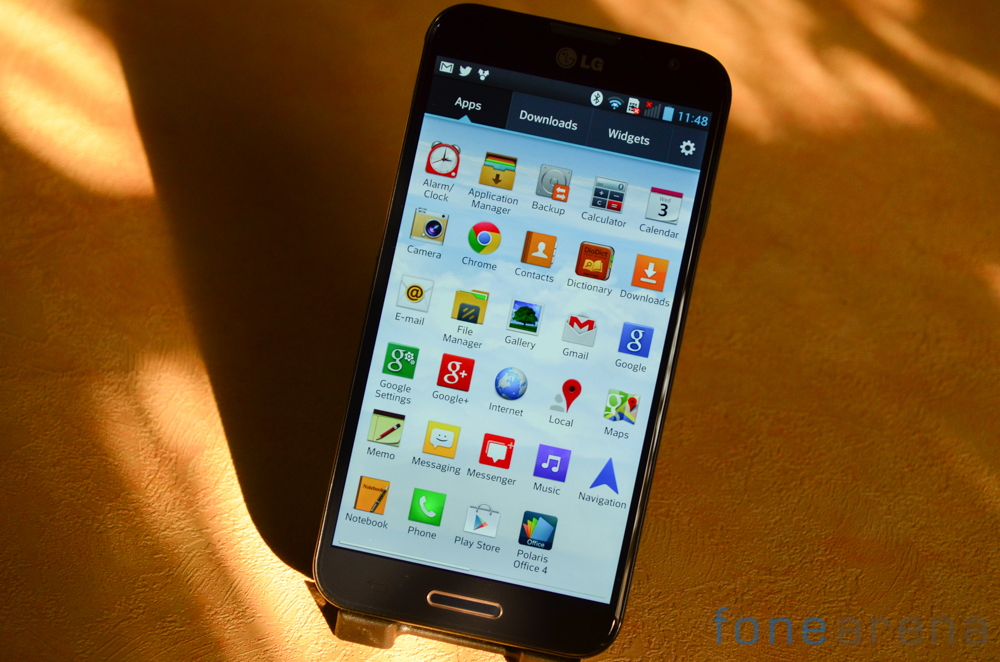
The defining feature here is definitely the display with the 5.5 inch panel occupying most of the front fascia of the device. The screen has a surprisingly thin bezel which makes it appear like an edge to edge display. Below the screen are two capacitive buttons flanking a hardware key located in the center. The hardware key works as a home key while the buttons on the right, left correspond to menu and back respectively.
Above the screen is the 2.1MP front facing camera and the earpiece as expected. A proximity sensor can also been seen up top. The upper edge of the phone houses a 3.5mm audio jack and a rather inconspicuous iR blaster.
The microUSB port lies at the bottom of the device. Over on the right you have the power key whereas the left side of the handset houses both the volume rocker as well as the Quick Button that can be configured as a shortcut to any app you might want. By default, it launches the Quick Memo application.
The back of the phone is where things get interesting. While made of plastic that doesn’t feel very premium, LG has given the panel a very interesting finish that sparkles when light strikes it at certain angles. The square pattern elements look fairly attractive. The metallic LG logo is engraved in the plastic and above it lies the 13 megapixel camera sensor. Flanking the camera unit is the LED flash and the loudspeaker grille.
Display
LG has talked quite a bit about the display on the Optimus G Pro. The 5.5 inch True HD IPS panel with full HD resolution definitely lives up to the reputation. The colors are vibrant yet very accurate unlike the oversaturated colors seen on AMOLED panels. The pixel density while lower than that of the HTC One or Samsung Galaxy S4 is still very impressive at about 400ppi.
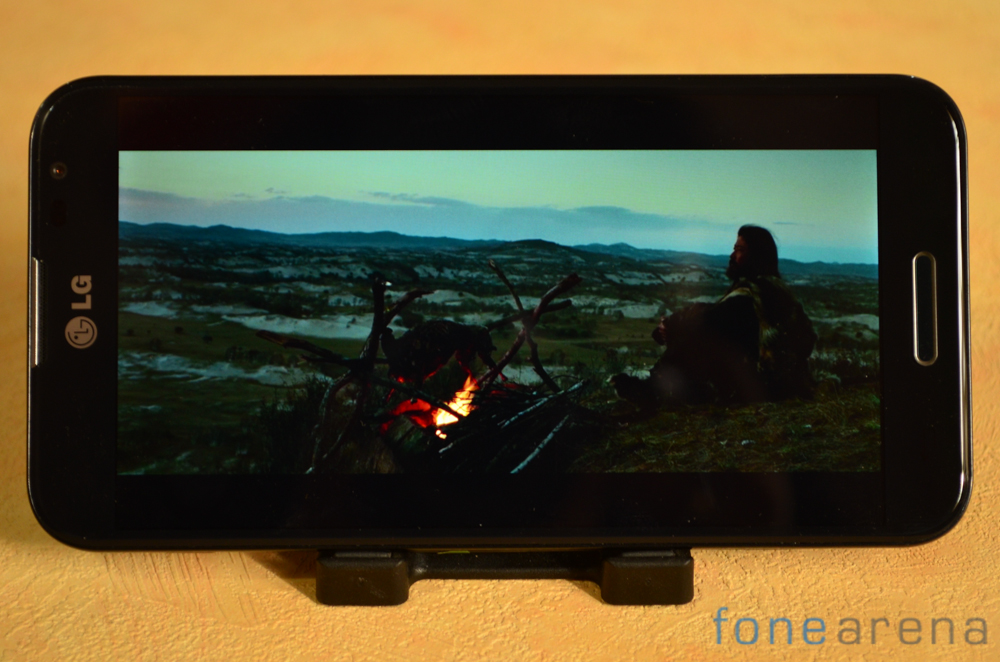
Coming to sunlight visibility, we found the display on the Optimus G Pro to be fairly reflective which hurts legibility in bright sunny conditions to a certain extent. Touch sensitivity is top notch and will detect touches even through fabric. While lacking a Wacom digitizer like on the Note 2, the screen is sensitive enough to take notes on using fingernails or a capacitive stylus.
Software
Running Android 4.1.2, the LG Optimus G Pro has its own ‘Optimus UI’ layer on top. Unlike the interface layers by the likes of Sony, the customizations here run deep and include a plethora of custom applications and even a range of themes to chose from.
Right off the bat, you notice very cool magnifying glass effect while unlocking the lockscreen that shows the homescreen contents. The lockscreen itself displays a large clock with the current date. It is possible to customize the style of clock you want on the lockscreen. A row of 5 customizable quick access shortcuts can also be seen at the bottom. Tapping the hardware button below the display pops up a miniature version of the QuickRemote application allowing you to use the IR blaster without having to access the specific application.
The homescreen is a fairly standard affair and has a row of persistant application icons at the bottom that remain constant across the homescreen panels. It is possible to delete or edit all of these except the app launcher icon that can only be rearranged. Up to 7 icons can be placed here. The app drawer on the other hand is a grid of 5 x 6 icons.
The notification panel on the LG Optimus G Pro appears very busy because of the range of toggles on offer. Additionally a second row of Qslide applications line up under the quick access toggles. If that wasn’t sufficient, it is also possible to have a mini iR remote show up in the notification panel. As is expected, music player controls too show up here dynamically as soon as you start playing a track.
It isn’t really possible to talk about each and every custom app loaded on the phone but we do intend to touch upon some of the critical ones. These include the backup and Qremote applications. As the name suggests, the former allows you to keep a backup of homescreen settings, personal data, downloaded applications and settings. While it is possible to do so manually, the real magic lies in the automatic backup configuration which should offer a lot of peace of mind to users. The Qremote application on the other hand serves as a one stop destination to configure the iR blaster and control your television, air conditioner, home entertainment system and more. The app lets users have multiple configurations across living rooms, kitchen, study, work area and more. In practice, the iR blaster works very well and we found ourselves depending on the phone instead of reaching out for the remote in more than one situation.
The quick access key mentioned earlier launches the QNote application by default. The application lets you chose switch between the inteface layer you were previously on or switch to a standard yellow memo pane. From here it is possible to annotate text or just scribble a few notes as per your wishes. The application works well enough and the sensitivity of the screen really comes into its own here as we were able to scribble legible text with just our fingertips.
LG has built in its own implementation of multi window displays that works quite well but is limited to only select built in applications. Users can have up to two of these QSlide applications running in windowed mode and have the option to adjust transparency as well. Customization options run deep in the interface layer and it is possible to manipulate almost every element of the interface to your liking. Right from the homescreen transitions, icons to the notification LED hidden behind the hardware home key, LG has built in options to let you have a very personalized experience.
Performance
The phone is powered by a Snapdragon 600 processor clocked at 1.7Ghz and paired with 2GB of RAM. The GPU here is the Adreno 320. Day to day performance is top notch with no noticeable lags or slowdowns but you wouldn’t really expect that on highend hardware like this! The phone managed to blaze through any application we threw at it. Paired with the gorgeous display, the phone makes short work of playing back high bitrate HD content and was overall a joy to use. We’ve embedded a few synthetic benchmarks below to give you some perspective regarding performance. The full range of LG Optimus G Pro benchmarks can be found here.
In the Linpack benchmark, the phone proves to be competitive and scores 291 points which places it very close to the HTC One. The Exynos 5 Octa variant of the Samsung Galaxy S4 proves to be the winner here albeit by a small margin.
In the Quadrant benchmark as well, the LG Optimus G Pro scores 12118 points and ranks slightly behind other Snapdragon 600 based handsets. As in Linpack, the Exynos 5 Octa variant of the Galaxy S4 leads.
LG Optimus G Pro Riptide GP2 and Shadow Gun Gameplay
httpv://www.youtube.com/watch?v=VD_U_SPOuOM
We also tried Asphalt 7, Dead Trigger and Modern Combat 4 using a PS3 controller
httpv://www.youtube.com/watch?v=uhmj6ZBQXbE
httpv://www.youtube.com/watch?v=bmQh7yPBiV8
Also check out the gaming review
httpv://www.youtube.com/watch?v=2ev5HF1sDcQ
Camera
The LG Optimus G Pro has a 13MP camera unit over at the back that is capable of shooting video in Full HD. A 2.1 MP camera module is at the front of the phone that is also capable of capturing 1080p video.
LG’s camera application provides an intuitive way to access the robust feature set it offers and includes a variety of camera modes to shoot in. These vary from the standard HDR, Panorama modes to a VR Panorama (360 degree shot), Burst shot and even a Dual camera shot wherein the phone superimposes an image from the front camera over another shot by the rear camera or vice versa.
Images shot with the Optimus G Pro look good for the most part. Noise does seem to creep in even in well lit subjects but the amount of detail is good. Colors are usually fairly accurate but tend to lean towards oversaturation.
We were quite surprised by the close up shots taken with the Optimus G Pro. Auto focus tends to be fast, sharp and reliable.
Low light images weren’t particularly impressive as the Optimus G Pro consistently underexposed the image resulting in dull, dim shots. Switching on the HDR mode does help in such cases at the expense of increased noise levels.As can be seen above, in HDR mode a lot more detail is visible but noise levels are visibly higher.
Here is the full HD video sample
httpv://www.youtube.com/watch?v=5kAa_T9keYo
Connectivity & Battery Life
Being a flagship level handset,the phone supports a wide range of connectivity options including quad band GSM/GPRS/EDGE, dual band 3G with HSPA and even LTE for ultra high speed mobile internet. The Optimus G Pro joins the elite club of handsets to support the WiFi ac standard alongside b/g/n. Additionally you also get DLNA, WiFi Direct, Miracast based wireless display capabilities. NFC, Bluetooth 4.0 are also present onboard. Built in storage is 16GB but you do get a microSD card slot on the handset. The USB port is MHL enabled and can be used with a range of connectors to output video over HDMI, play media on flash drives using USB On The Go. As mentioned above, there is also an iR port on top of the phone.

The battery pack is rated at 3140 mAh. The massive screen on the Optimus G Pro takes its toll on battery life and despite having the same specifications as the HTC One, Galaxy S4, it doesn’t really have anywhere close to the same longevity. That said the handset can still last a work day of usage. You might be able to push this to two days with minimal usage but you’d be better off charging the handset overnight. Worth noting is that the phone supports wireless charging and you can just plop it on top of LG’s new wireless charging plate and let it do its thing.
Conclusion
The LG Optimus G Pro is a power packed handset with some very interesting software additions. With a top notch display, decent camera and top of the line specifications it is definitely worth considering if you’re in the market for a new high end phone.
The uninspiring design and the not so amazing plastics used detract from the experience and make us point out the competition. If a large screen flagship is what you want and you don’t want to wait for the upcoming Galaxy Note 3, this is your best bet. The LG Optimus G Pro is priced at Rs. 42,000 in India.
Pros
- Beautiful display
- Powerful
- Intuitive, feature packed software build
Cons
- Uninspiring design
- Average camera
- Quality of plastics

